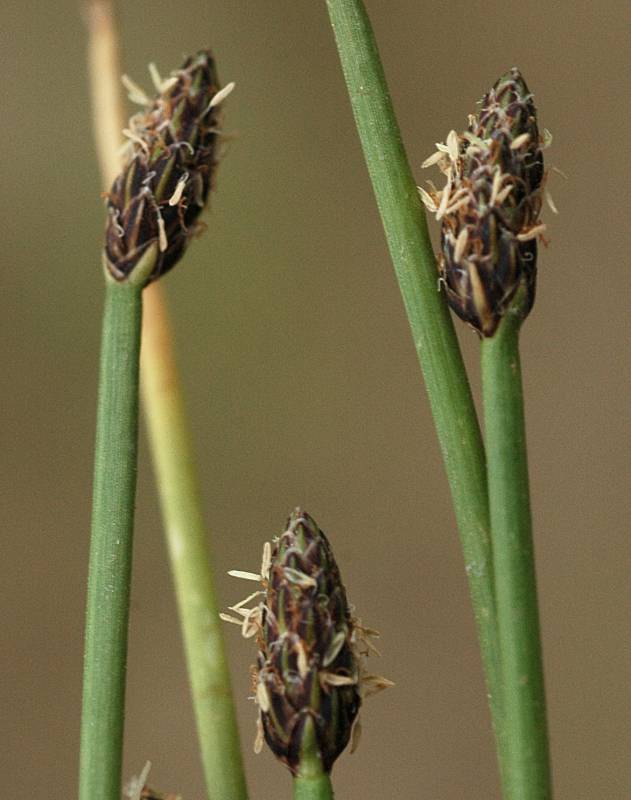Eleocharis engelmannii
Eleocharis coloradoensis
Engelman spikerush
dwarf spike-rush
Leaves all basal and reduced to sheaths.
Spikelet terminal and solitary, 5-13 mm. long, ovoid, many-flowered, usually over 40;
scales spirally arranged, 1.7-2.5 mm. long, purplish or brownish, with greenish mid-strip and paler, translucent margins, the lowest one sometimes empty;
perianth bristles 6-7, brownish, about equal to the achene, or wanting;
stamens 3;
style usually bifid, thickened at the base.
Achenes lenticular, 1.0-1.5 mm. long, including the flattened tubercle, which is appressed to the summit of the brown, smooth and shining body of the achene.
Eleocharis engelmannii
Eleocharis coloradoensis
Occurring on both sides of the Cascades crest in Washington; Alaska to California, east across most of North America to the Atlantic Coast.
Occurring east of the Cascades crest; southeastern British Columbia to California, east to Idaho, Utah, New Mexico, and Arizona, also in Great Plains and central North America.
- Local floras:
BC,
CA,
OR,
WA
- Local Web sites:
CalFlora,
CalPhotos,
Flora NW,
PNW Herbaria
WildflowerSearch
iNaturalist (observations)
USDA Plants Database
- LBJ Wildflower Center
- SEINet
- Plants of the World Online
- Encyclopedia of Life
- Wikipedia
- Google Image Search
- Local floras:
BC,
CA,
OR,
WA
- Local Web sites:
CalFlora,
CalPhotos,
Flora NW,
PNW Herbaria
WildflowerSearch
iNaturalist (observations)
USDA Plants Database
- LBJ Wildflower Center
- SEINet
- Plants of the World Online
- Encyclopedia of Life
- Wikipedia
- Google Image Search


